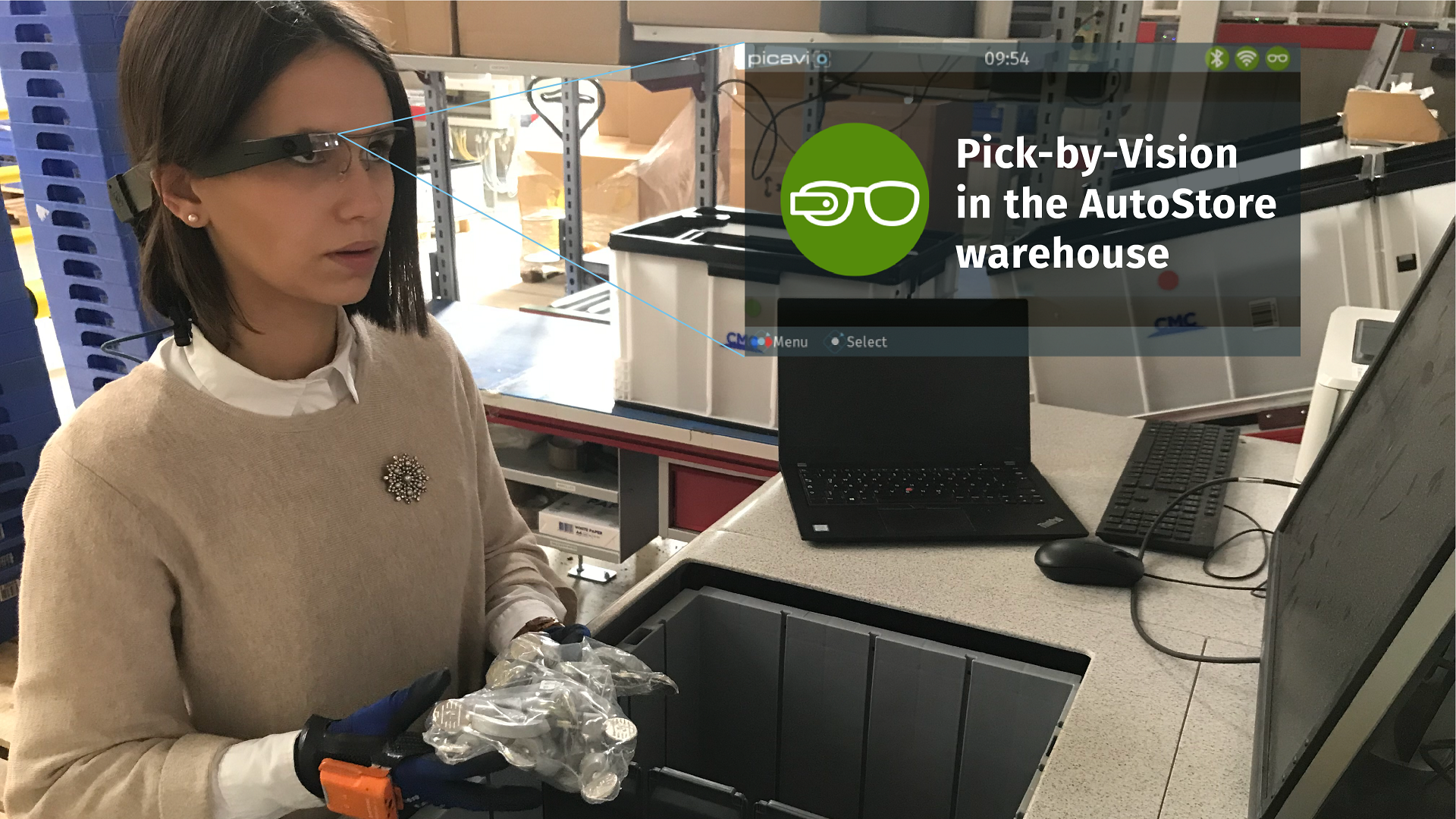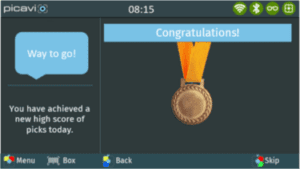Menu
With its high storage density, AutoStore technology has established itself as a state-of-the-art solution in many warehouses. For small-parts storage in particular, the robot-assisted system is proving to be not only space-saving but also highly efficient. Although AutoStore relies on a high degree of automation, it is impossible to imagine picking without humans. Read on to learn how companies can support their employees at the picking station with Pick-by-Vision from Picavi.

AutoStore is a storage technology originally from Norway developed specifically to automate the small-parts warehouse. Now, users with a large number of stock-keeping units and small parts increasingly rely on the system. An AutoStore warehouse consists of modular containers that are stacked on top of each other in an aluminum structure and transported by robots to the respective picking station. Fast-moving goods are usually stored in one of the upper bins, while slow-moving goods slide further and further down the bin stack. This ensures that the prioritized goods reach the picking workstation as quickly as possible.
AutoStore systems build on the classic goods-to-person picking. The pickers’ workstations, known as ports, can be installed anywhere on the sides of the AutoStore warehouse. At the ports, the containers automatically receive the correct goods. The operator picks up the required quantity of goods and the totes are then picked up again by the robot and stored in the system.
Because of the strong bias for variation and the often large range of products, humans are still indispensable for order picking in the AutoStore warehouse. At the same time, however, the human worker is still a probable source of error in the overall system that should not be underestimated. In practice, a single AutoStore box can contain up to 32 compartments with different products. To ensure that the right goods are always picked in the right quantities and that changes to the inventory are also adopted by the software, assistance systems for the employee at the port become vital – and this is where Picavi Pick-by-Vision comes into play.
In contrast to other picking methods, the hands-free, vision-guided principles of the Picavi solution are significantly more effective and productive. Hand-held scanners, for example, are often put down to handle the goods and then picked up again – a less ergonomic and less efficient process that is simplified with Picavi Pick-by-Vision. The clear visualization via the user interface on the smart glasses provides users with security and time savings in the picking process.
As a result of this efficient way of working, new picking records are constantly being set. With the assistance of the Picavi visualization, workers achieve an increase in picking performance of up to 65%.

Pick-by-Vision from Picavi enables intuitive picking in the AutoStore warehouse. The Picavi software receives all the necessary information about the internal structure and contents of the box via the Enterprise Resource Planning System used. The software then visualizes the next picking order for the warehouse employee on the smart glasses. The picking process itself is divided into three steps: